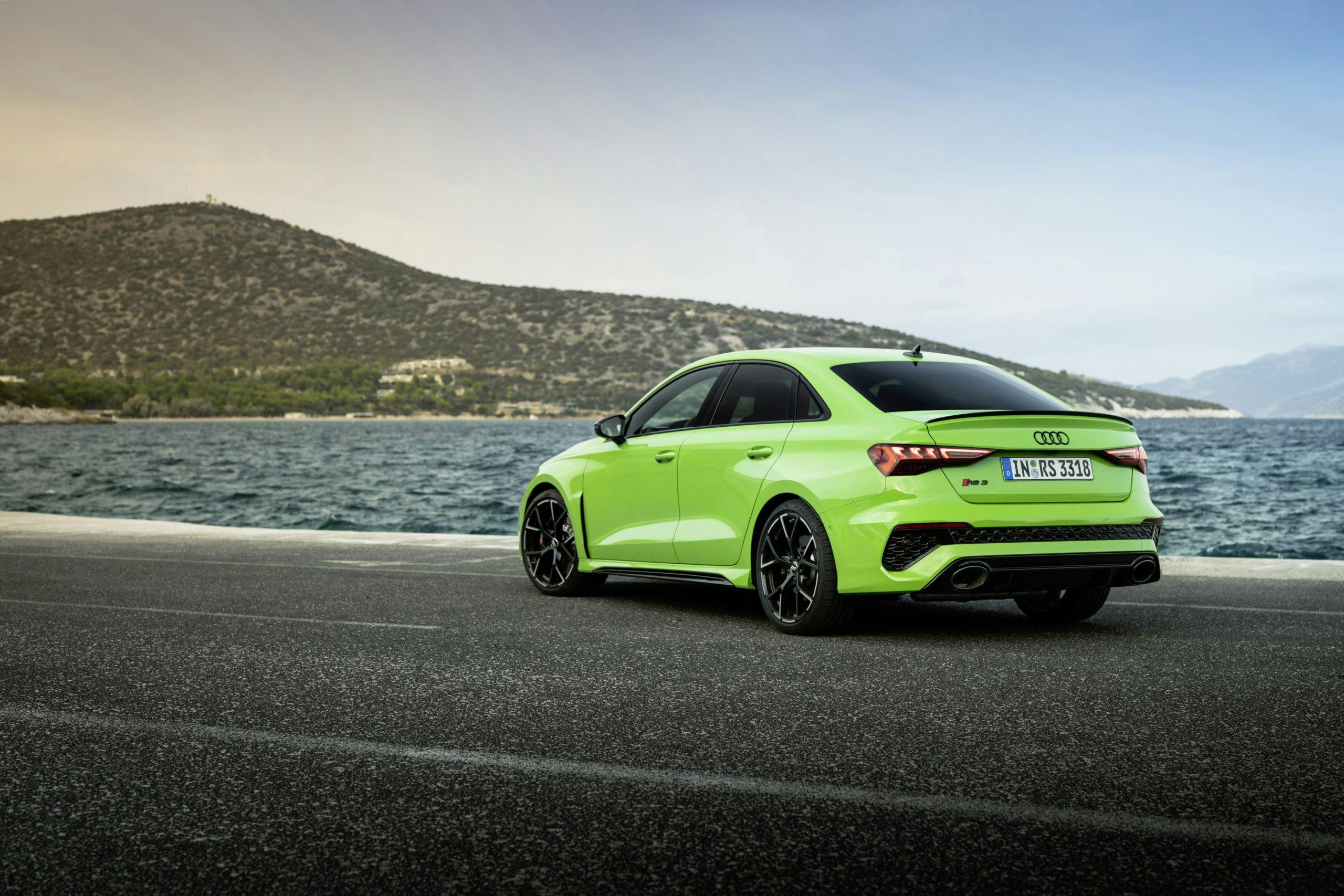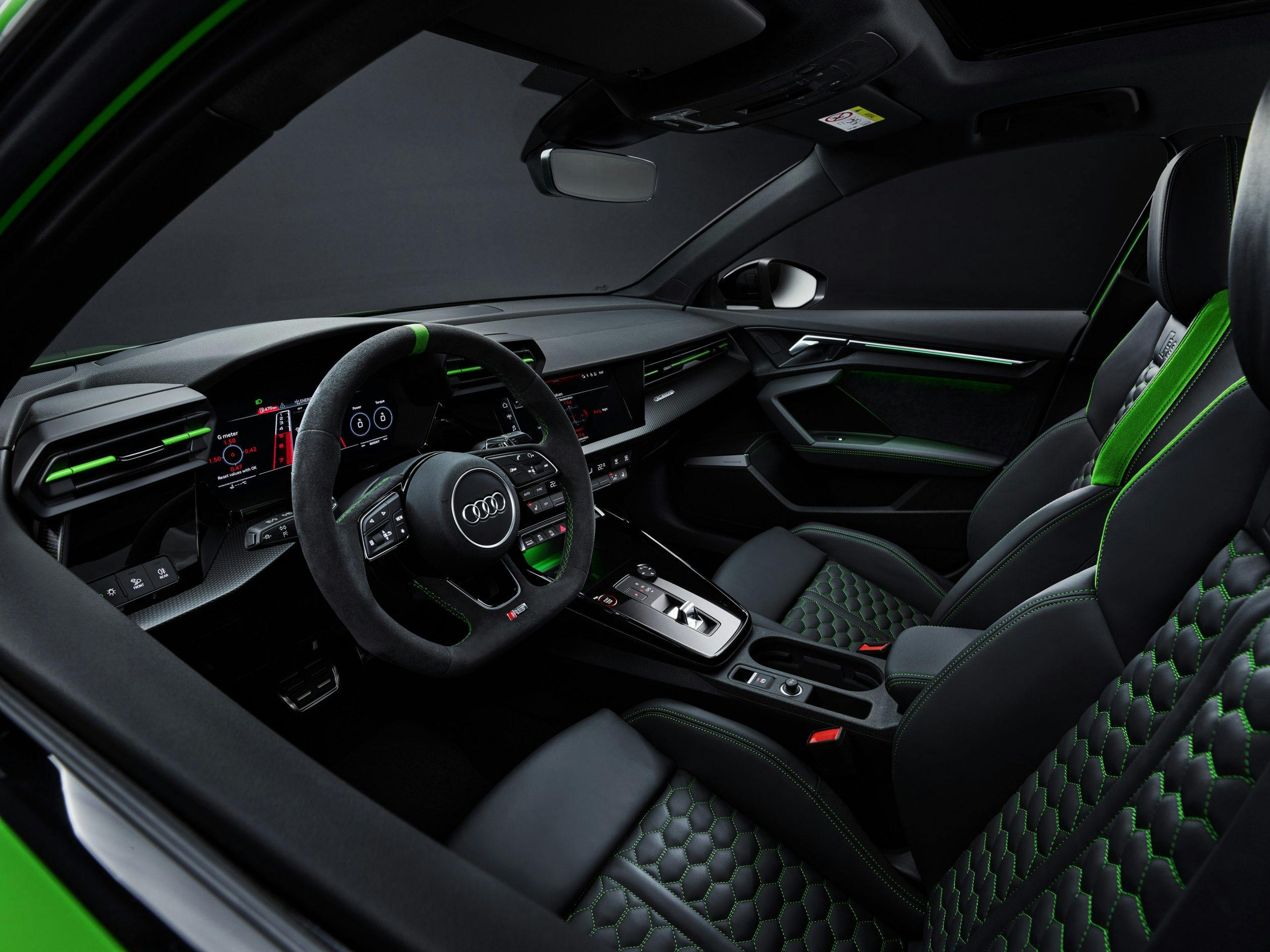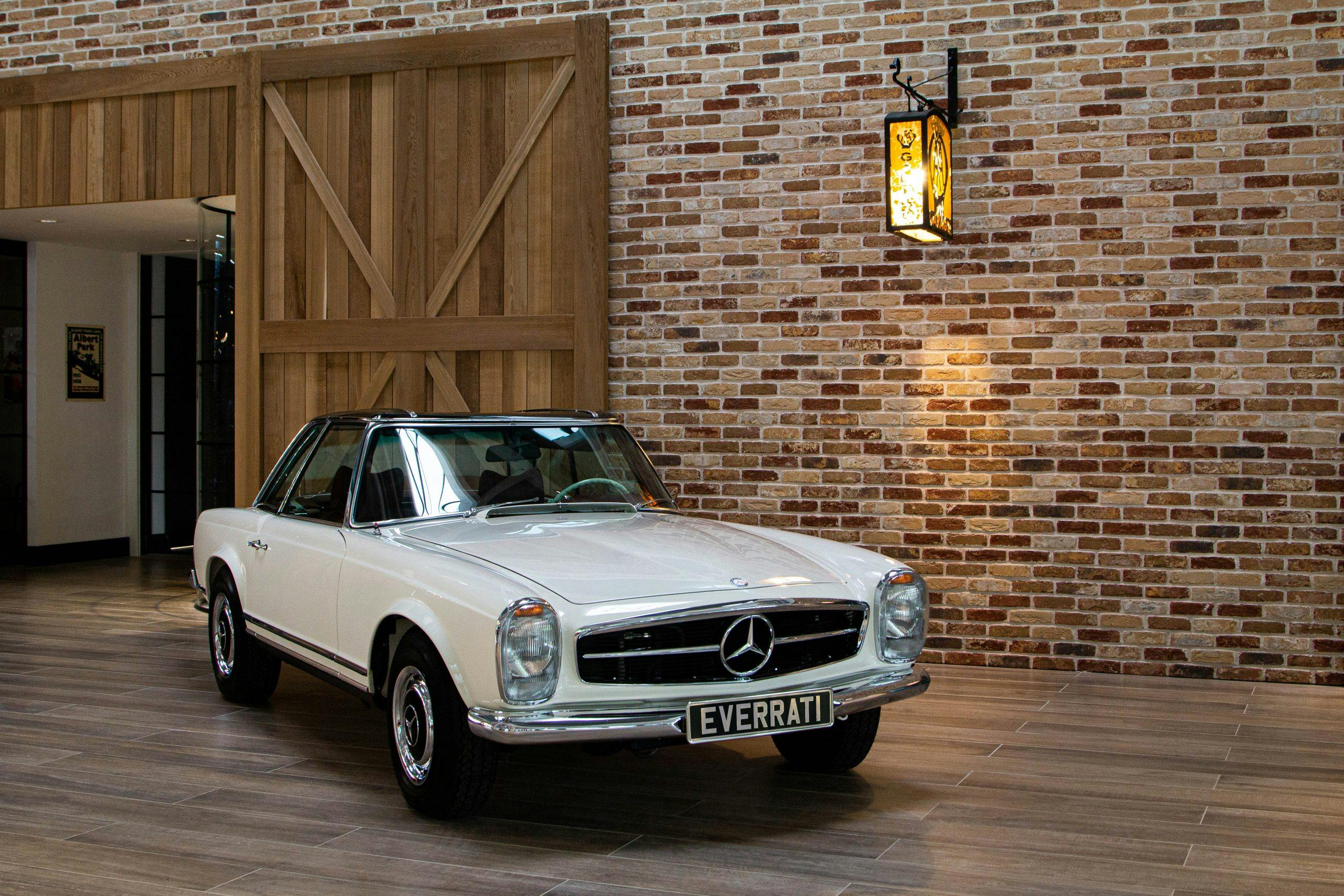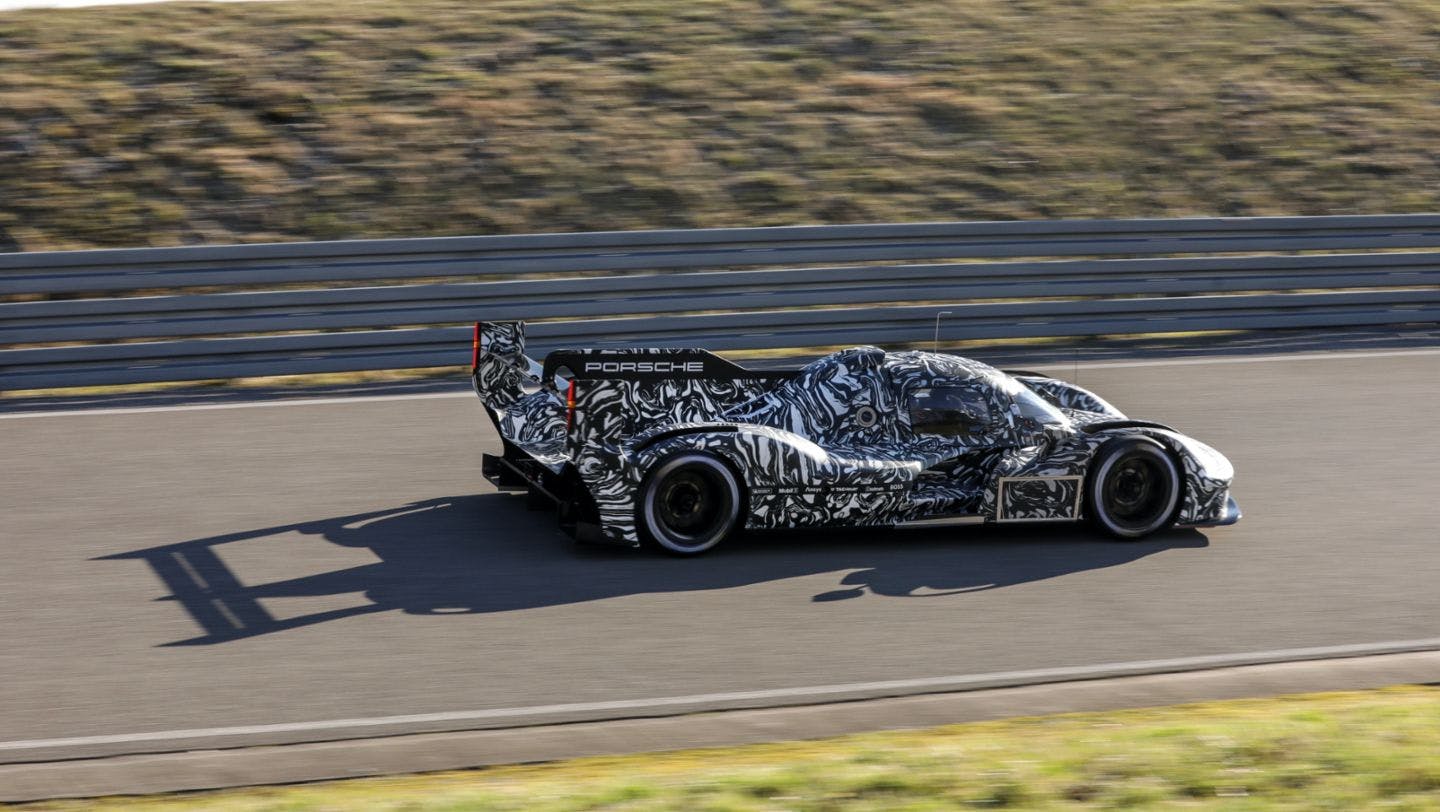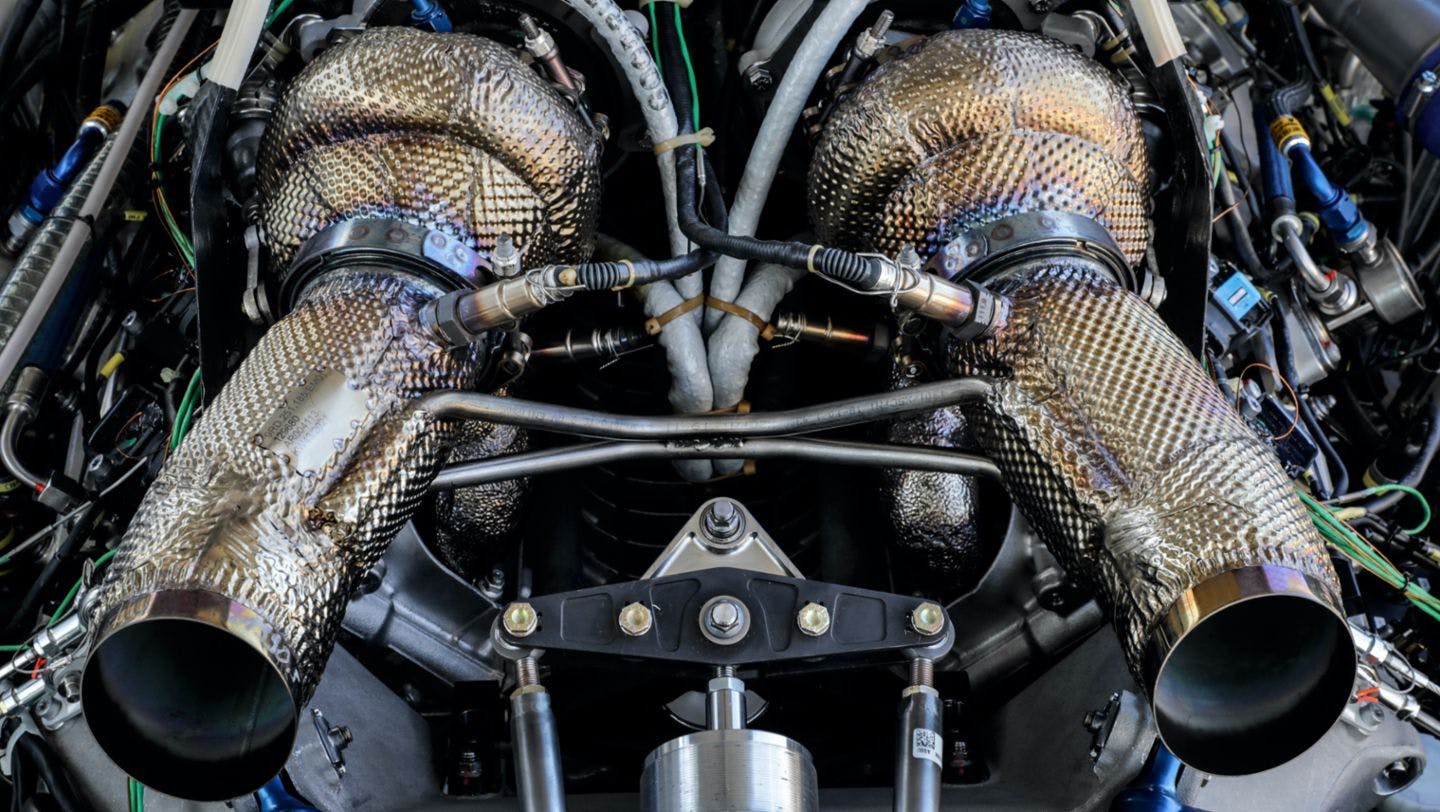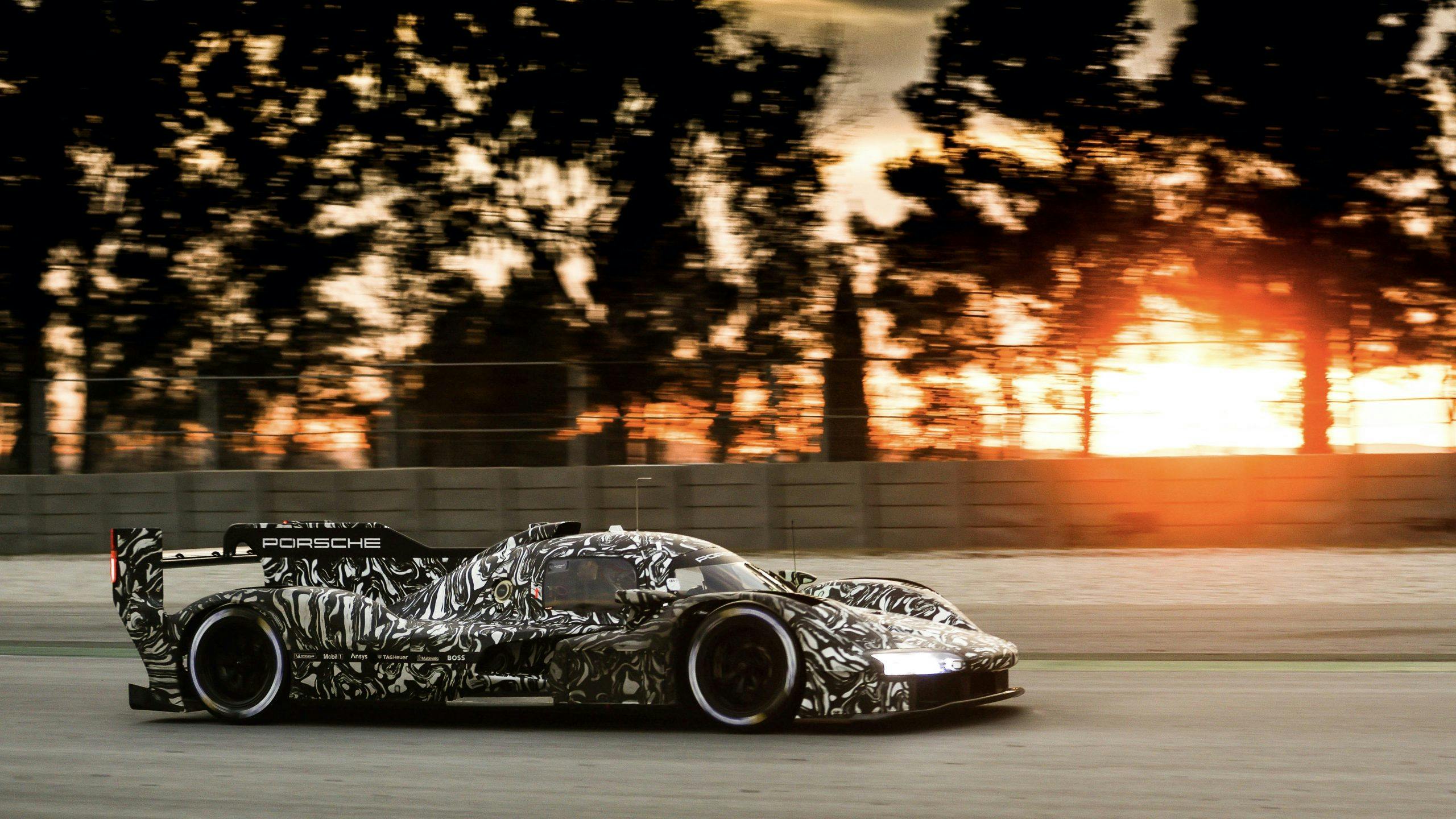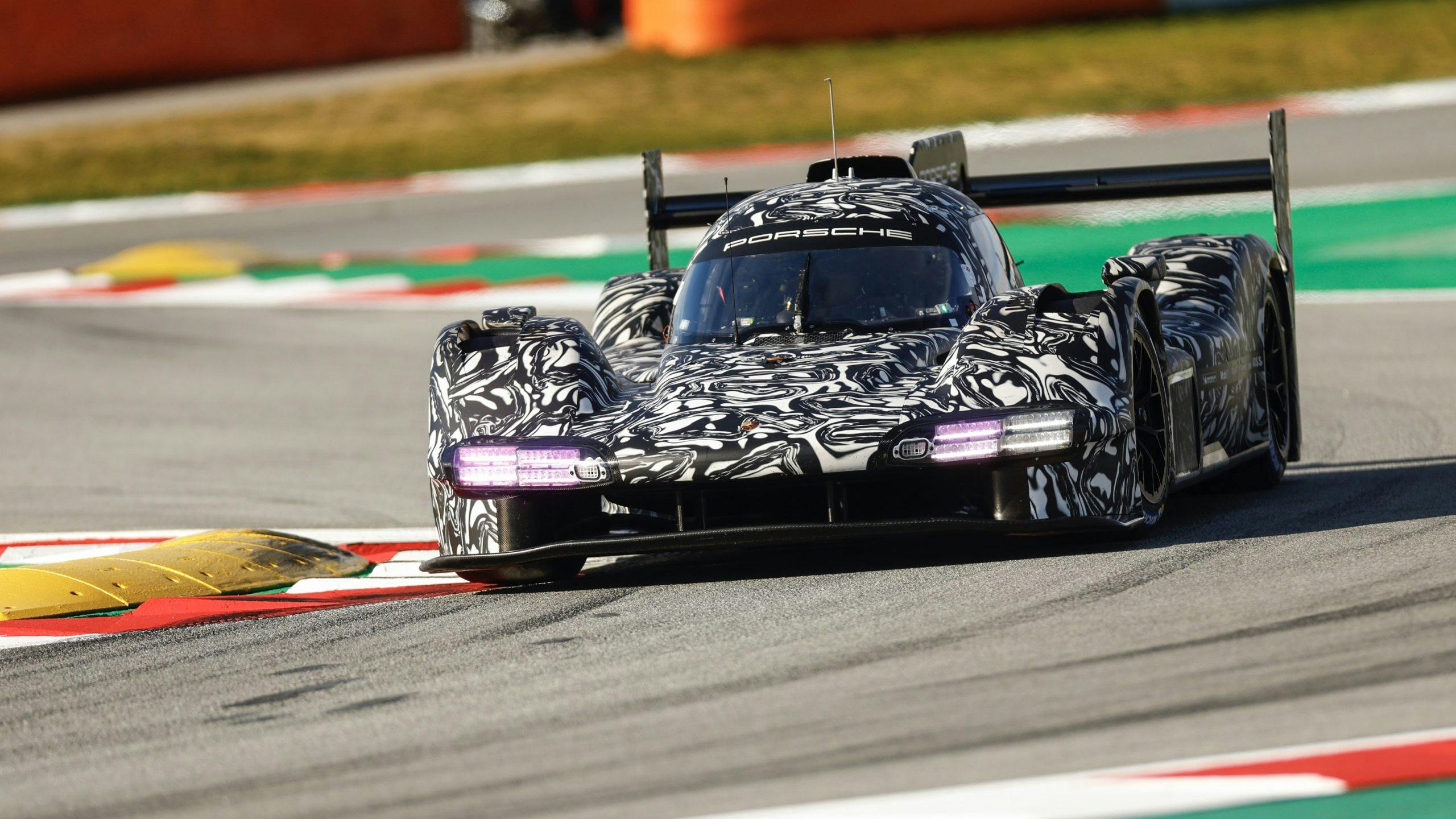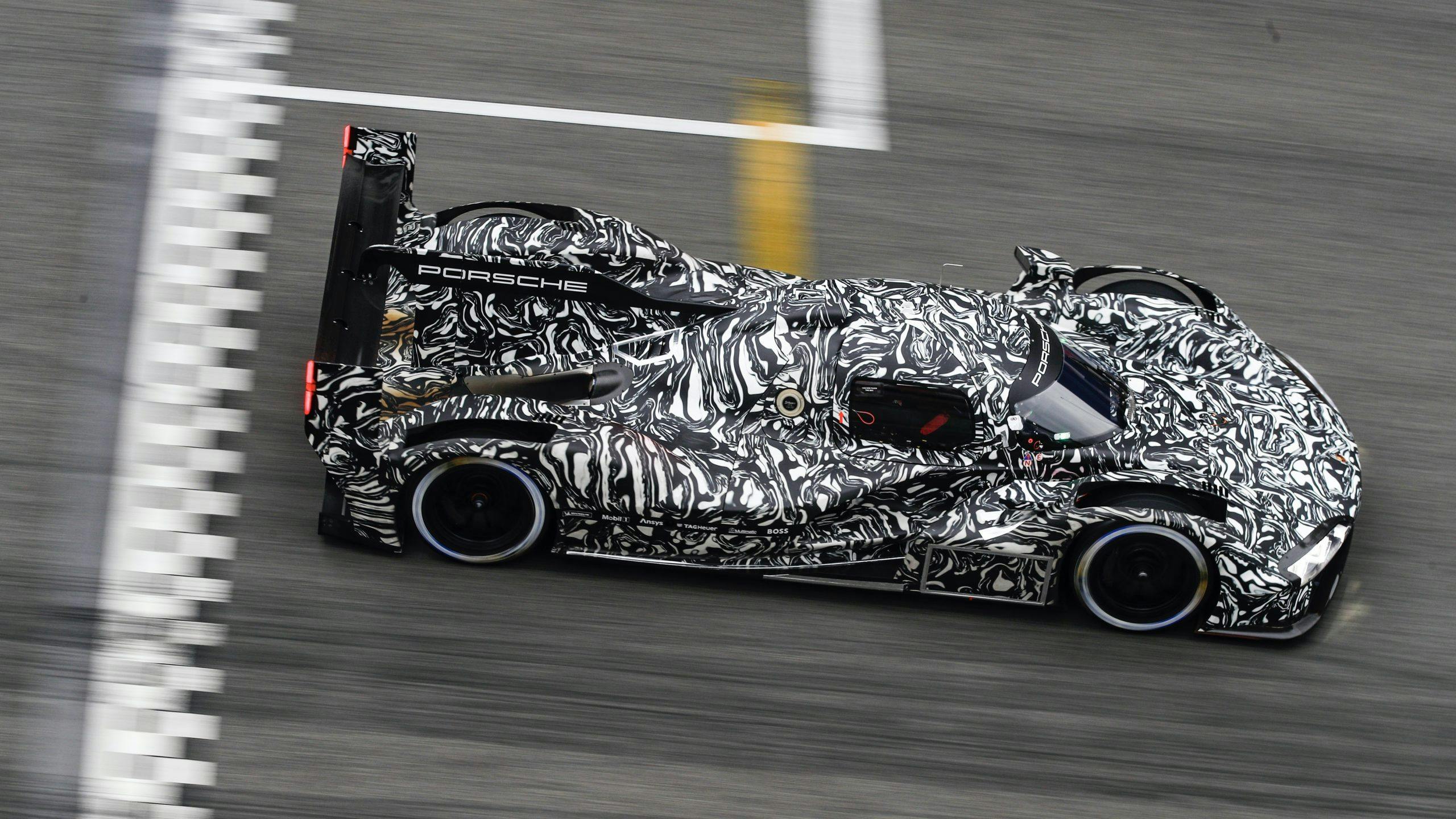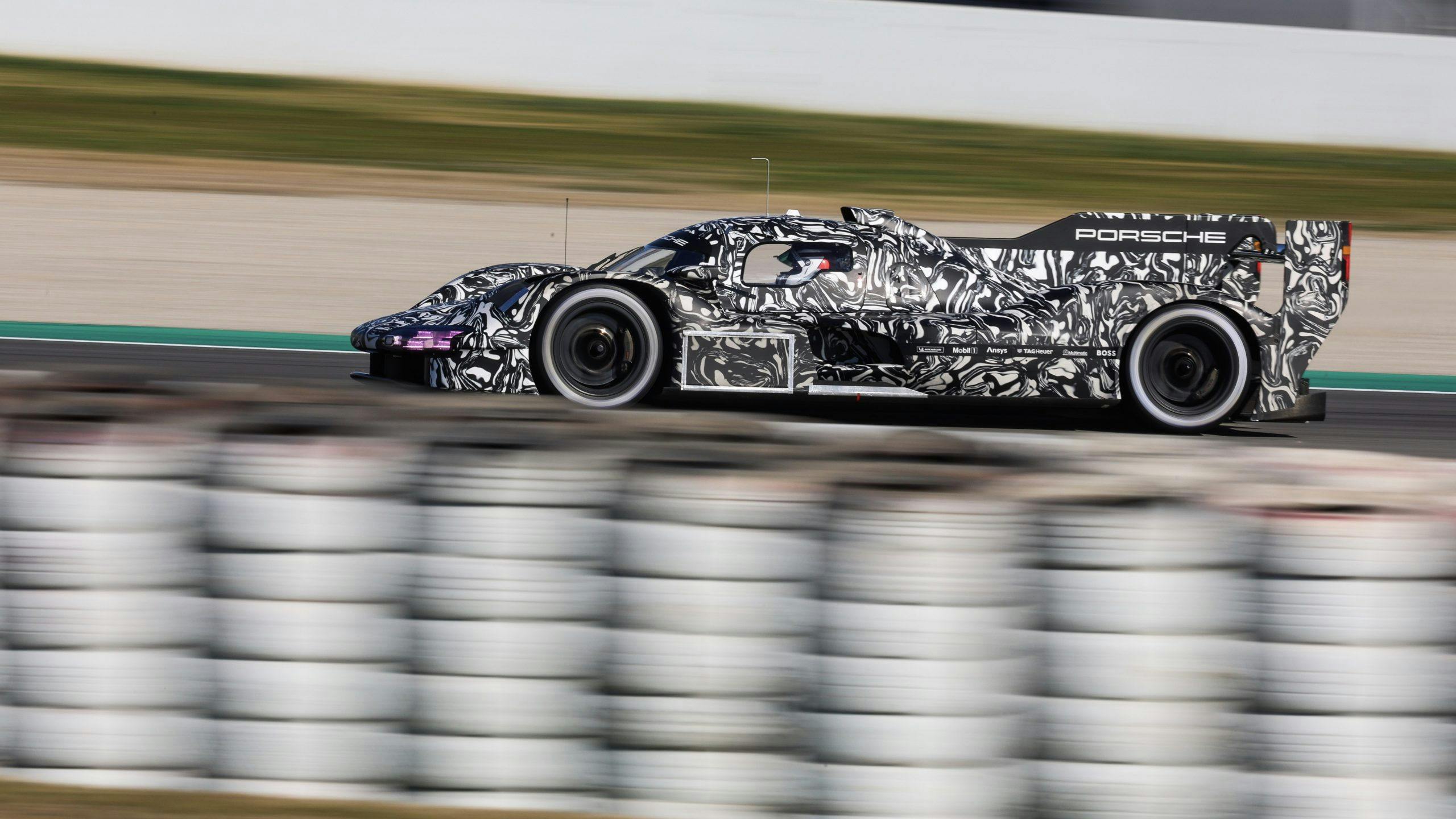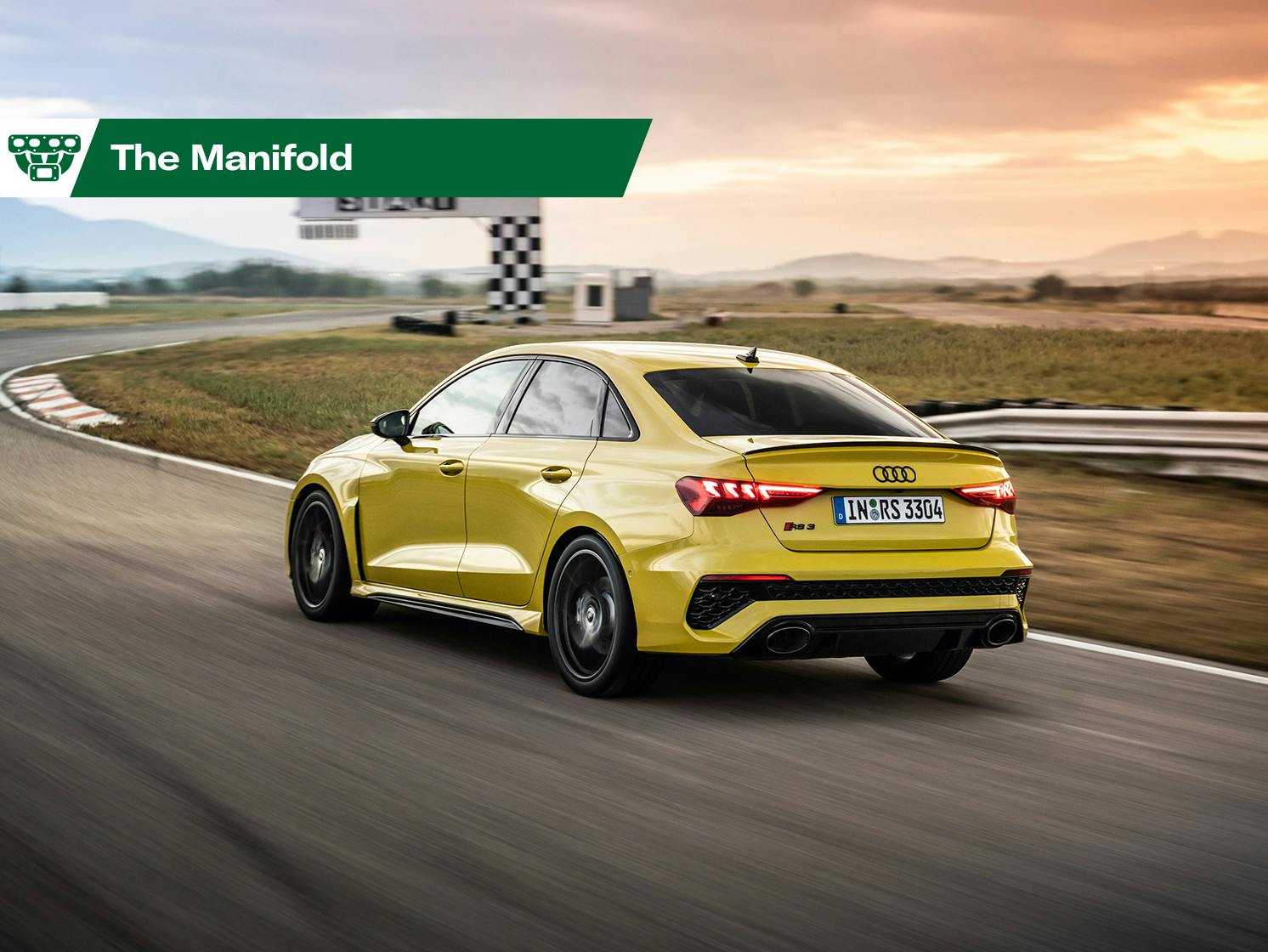Media | Articles
2022 RS 3 skates under $60K, Porsche offers LMDh racers to privateers, V-12 for Ferrari SUV
U.S.-spec RS 3 outshouts Euro model, skates under $60K
Intake: Audi’s raucous pocket-rocket is back in the U.S. with new looks, some new mechanicals, but the same great five-cylinder engine. Relative to its 2020 model-year predecessor, the new RS 3 boasts a 1.3-inch wider track but keeps the same reverse-stagger (wider front wheels than rears) setup. For the first time in the RS 3’s life, ultra-sticky Pirelli P Zero Trofeo R summer tires are an option. The exterior is more overt than that of the 2020 car, which had a sleeper vibe. (Audi appears to be leaving the understated shtick to the RS 3’s MQB platform mate, the Golf R.) You can get the 2022 RS 3 in eight colors, including the Kyalami Green seen below. Inside, Audi’s brilliant virtual cockpit comes standard. The seats (same ones as the S3) come draped in Nappa leather with RS-specific accent stitching. Sadly, we don’t get the Euro-spec flat-bottom steering wheel below—Audi says this is because the round one is equipped for hands-on detection, a necessary tech for conveniences like lane-keeping assist and adaptive cruise control.
We do get that 2.5-liter unicorn of a turbocharged five-cylinder engine. The unmistakable note of the 1-2-4-5-3 firing order is even louder here in the states thanks to a sport exhaust that Europeans don’t get. The engine now produces 401 hp and 369 lb-ft of torque, gains of 7 and 15, respectively. Unsurprisingly, the new RS3 gets the same twin-clutch rear-drive unit that debuted on the über-Golf, but Audi says the software and tuning are entirely unique because of the different engine and transmission. The electronically actuated multi-plate clutches on either rear half-shaft can shuffle up to 100-percent of the available torque to either wheel to help corner better. Also new for 2022, Audi’s new Dynamic Chassis Control (DCC) suspension replaces both the standard magnetic ride of the 2020 car and the brilliant, fixed dampers in the previous options list.
The new RS3 will go on sale later this summer, starting at $59,995 with destination—a $2800 bump over the previous-gen car.
Exhaust: We’re bummed that the fixed damper suspension has been dropped, but Audi says the large damper-valve adjustment range of DCC made the fixed- and magnetic ride-setups obsolete. A compact sedan with a unicorn of an engine is about as counter-cultural as you can get in our crossover-dominated landscape, in which everyone is worships at the altar of two-liter turbo fours. Who woulda guessed that Audi—sometimes criticized for being cold and technical—would be the punk rocker with green hair?
Pagoda SL gets electrified by Everrati
Intake: Everrati, the British company that specializes in electrifying cult classics, has partnered with Mercedes-Benz restorers Hilton & Moss to “redefine” the W113 SL. Hilton & Moss will take each donor vehicle and give it a ground-up resto using original refreshed parts at its Hertfordshire home, before handing them over to Everrati for the (reversible) electrification process. Everrati says it “works meticulously to respectfully preserve the original character and ‘feel’ of its redefined icons. Everrati’s Mercedes-Benz W113 SL ‘Pagoda’ remains true to this ethos, offering levels of performance comparable to the original model.” The EV powertrain delivers 182hp and a range of more than 160 miles for a price that starts at around $370,000.
Marketplace
Buy and sell classics with confidence
Exhaust: Having already tackled the Porsche 911 and Series II Land Rover, and with a reproduction of the Ford GT40 on the way, Everrati certainly isn’t afraid of ruffling feathers in the classic car community. Would you be tempted to drop the internal combustion engine (and the top) on an emissions-free Pagoda?
Porsche to provide four LMDh prototypes to privateers in 2023
Intake: Porsche announced this week that it will provide a maximum of four LMDh prototype racers to privateer teams in 2023. These Mulsanne-killers will be eligible to compete in the top ranks of the FIA World Endurance Championship (think 24 Hours of Le Mans) and the IMSA WeatherTech SportsCar Championship (24 Hours of Daytona). According to the manufacturer’s Head of Motorsport Thomas Laudenbach, the several groups have reached out to Porsche, inquiring about running a LMDh car and now it’s a matter of figuring out which teams can realistically campaign the cars. “It is not about, from a financial perspective, selling another car and another,” says Laudenbach. “We want to make sure that if the car is on the grid, if a customer team enters, this can be done on a certain level. And not just filling up the grid with Porsches.”
Exhaust: Props to Porsche for offering additional of LMDh racers, especially amid the flurry of prep for its return to Le Mans. According to Sportscar365, one privateer team boss recently estimated that the running costs of a Porsche LMDh car over the course of a season would be in the range $6.5 – $8.6 million in addition to a $2.7 million initial investment. From the raucous 917s of the 1970s to the Penske RS Spyder in the 2000s, top ranking Porsches have a tendency to hold worth well beyond their racing days. If you are interested in campaigning a LMDh Porsche prototype next year and have approximately $11 million at your disposal, you better get on the phone with Stuttgart. You don’t want to be on the wrong side of history.
Volvo drops combustion-only powertrains, adopts Google infotainment for 2023

Intake: For 2023, Volvo’s stateside lineup will drop all combustion-only powertrains in favor of the electrified drivelines currently offered in the brand’s European portfolio. The change adds mild-hybrid offerings (in both front- and all-wheel-drive spec) to the current battery-assisted and/or electric offerings in the states, supplementing Volvo’s two all-electric compact crossovers (C40 and XC40) and the plug-in hybrid versions of its other SUVs (XC60, XC90), sedans (S60 and S90), and wagons (V60 and V90, the latter now Cross Country–only). The mild-hybrid options will be denoted B4, B5, and B6 and will replace the T5 (turbocharged four-cylinder) and T6 (adds an engine-driven supercharger) options. Those are the mechanical changes for 2023, but the XC90, S60, and V60 Cross Country also gain infotainment fully integrated with the Google ecosystem—Google Maps as in-boar navigation, Google Play store for apps, and Google Assistant for voice commands.
Exhaust: As ambitious as Volvo’s all-electric schedule is (it’s aiming for an all-EV portfolio in eight years), this incremental change is a wise one for the U.S. market. Americans tend to be more reluctant than Europeans to go full-electric, or even to transition a plug-in hybrid setup, so Volvo has bridged the gap with relatively brainless and unobtrusive mild-hybrid offerings. We’ve sampled vehicle infotainment fully saturated with Google tech in the Polestar 2 and were quite impressed; hopefully the 2023 upgrade also causes the display to boot up a bit quicker. In all, the 2023 upgrades should capitalize on the design, efficiency, and techy-ness that are Volvo’s current strengths.
Pure V-12 energy for Purosangue SUV, says Ferrari
View this post on Instagram
Intake: Ferrari’s upcoming SUV will be a major (though not unprecedented) break from tradition, but it will stay true to the brand’s history in one respect—its powerplant. “The Purosangue will be a naturally aspirated V-12, our iconic model. We have been testing different options, but then, I think it was clear that to celebrate the bloodline, the performance, innovation, experience, the V-12 and the experience and product performance it is able to deliver, is the right solution to push to the market,” says CEO Benedetto Vigna in an earnings call. Expect the engine to be closely related to the 789-hp 812 Superfast’s motor and free of any hybrid tech. Like the FF and Lusso, power will likely be delivered to all four wheels. Production is slated to begin later this year with deliveries starting in 2023.
Exhaust: A V-12 under the hood certainly sets the Purosangue apart from its rivals in the über-SUV arena. Only the Rolls-Royce Cullinan is available with 12 cylinders, and those are tuned for a silky and near-silent experience. The Ferrari, we suspect, will showcase the exact opposite personality—rightly so.

